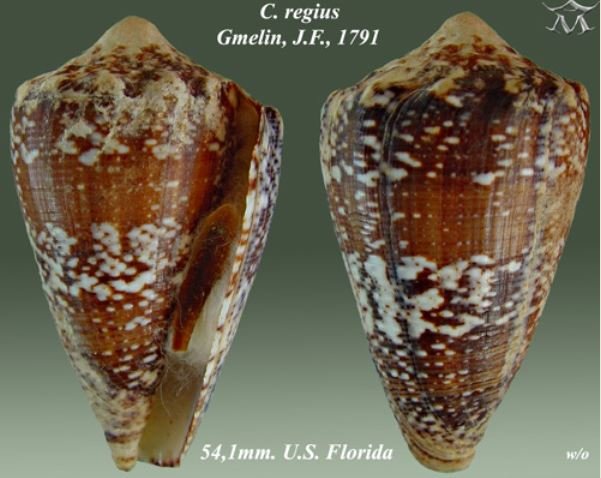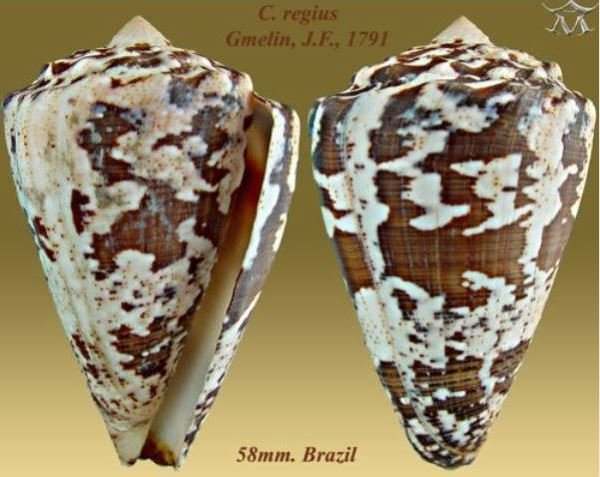Venom from Sea Snail can yield a more effective Pain Killer
It is often very difficult to describe pain.
As a feeling of discomfort, how do you respond to pain, how does your brain interpret pain, and how does our body react to pain.
For starters, how easily can one describe “pain”? Do you start with "it is hurting me?" Or perhaps, "I feel it here and here"? Well, in simple terms, i think "pain can be felt and experienced, but not explained."
Each individual is dynamic in nature, and so is our response to stimuli, and in particular, pain. No two persons can feel pains exactly like each other. But then pain exists and it is part of our life.
How do we relieve pain?
How individuals deal with pain varies alot? Apart from psychological pain, which like the name suggests, is psychological; pain relievers have been a sort-after medication and method of alleviatings various forms and degrees of pains in the body.
But recently, the need, use and - most times - abuse of pain killers in the society has grown to an alarming rate. It simply means that in a bid to fight pains, people are becoming addicts to pain-killers, one way or the other. And there seems to be a high demand of opioid painkillers for treating pain-related ailments.
With addiction to painkillers slowly becoming a problem, scientists decided to research on alternative methods or sources for treating pains.

The “Conus regius” - the Caribbean Sea cone snail
According to a recent report coming from the University of Utah, researchers say they have discovered a pain-relief alternative from an unlikely source in the form of a small snail discovered in the Caribbean Sea.
The study of the unique specie of snail revealed that the little cone snail, “Conus regius”, possesses a venom capable of blocking pain pathways which are different from the very ones that opioids act on.
A Professor of Biology from the University of Utah, Baldomero Olivera, said;
"Nature has evolved molecules that are extremely sophisticated and can have unexpected applications. We were interested in using venoms to understand different pathways in the nervous system."

The venom of “Conus regius”
The venom of the cone snail, has been studied and discovered to possess a compound having the potential of being a source for insulin. The team of researchers were able to isolate a compound from the venom of the Conus regius, referred to as Rg1A. The compound blocks a particular type of pain receptors in rodents known as “a9a10 nicotinic acetylcholine receptors (nAChR).”
The study compliments the recent finds of a relatively small number of non-opioid-based pathways which hold the key to the treatment of chronic pain with a reduced risk of getting addicted to painkillers.
Underlying discoveries and the medical potential of compound "Rg1A"
The compound derived from the snail also displayed a surprising phenomenon. It had the ability to reduce pain, but not only that, after the substance has been fully processed by the body, the pain-reducing effect lasted long afterwards.
It was discovered that 72 hours after the injection had been administered; the compound was still preventing pain. This suggested that the compound does possess a regenerative effect on various parts of the nervous system, and could help reduce the root cause of chronic pain and not just address the symptoms temporarily.
Conclusion
According to reports credited to J. Michael McIntosh, a professor of Psychiatry at the University of Utah Health Sciences, stated that;
"We found that the compound was still working 72 hours after the injection, still preventing pain. Once chronic pain has developed, it is difficult to treat. This compound offers a potential new pathway to prevent chronic pain from developing in the first place and also offers a new therapy to patients with established pain who have run out of options," he said.
A wider research led the scientists to go beyond animal testing. Synthetic versions of the compound were developed with better properties to enable it work on the corresponding pain pathway receptors in humans.
Although the compound has not been tested on humans, researchers hope to carry out more investigations to ascertain the level of effectiveness of the compound and its use as a potential new drug for pain-therapy and for more medicinal and clinical applications.
Resources: [ref1], [ref2], [ref3], [ref4], [ref5], [ref6]
Thank you for your time and for reading my post.
If you found this post interesting, then kindly UPVOTE, RESTEEM and FOLLOW @rickie, for more quality posts.
You Can Check Out My Other Posts Below:
- Mechanism and Difference Between A Taser and a Stun-Gun
- Why Aqueous Battery Can Easily Replace Lithium-ion Battery Technology
- Funny and Cheesy Science Jokes
- Part of the Brain That Kills Pain Can Provide Alternative To Opioid
- Daffodils - The New Battle Axe Against Cancer
- Illegal Animal Poachers Are In Trouble; As New Artificial Intelligence Is Set To Screw Them Up

as funny as the research may seem, ground-breaking discoveries could be made from this.
like reverse engineering to create new antidotes etc.
True @arutynwa. More discoveries in the field of science can only lead to the development of amazing medical and scientific procedures for the greater good of man. Thanks for reading.
Thanks for responding
These toxins have tremendous potential for pain killers in humans. In this case, the toxin is a neuropeptide (a short sequence of amino acids) just like insulin, which is also a peptide drug. Unlike opiates (what is prescribed today) they could solve the addiction and overdose problem that we currently have with powerful opiates like fentanyl!
Thanks for the post.
Cheers!
ian
You are right @rcebike. The issue of the body getting addicted to opioid painkillers is becoming somewhat of a medical epidemic. Hence, the need for this new procedure. Glad to know you are in the medical and genetics line and that concur with the significance of this discovery.
It's amazing what nature has in store, waiting to be discovered. How many more obscure plants or animals may hold unlikely secrets to improve human life?
So many more, I presume @snaves. Nature is such a tool, mysterious are the age of time. I'm just so glad that so many of these discoveries are being effected in our time.
Interesting post, well it should be carried out on human so we could know if it really works and if there isnt any side effect.
Yes, I agree with you @rebeccafl. Human testing would definitely be on the agender next, as a lot of patients dealing with so many pain-related ailments would certainly benefit from this new discovery.
Congratulations! This post has been upvoted from the communal account, @minnowsupport, by Rickie from the Minnow Support Project. It's a witness project run by aggroed, ausbitbank, teamsteem, theprophet0, someguy123, neoxian, followbtcnews, and netuoso. The goal is to help Steemit grow by supporting Minnows. Please find us at the Peace, Abundance, and Liberty Network (PALnet) Discord Channel. It's a completely public and open space to all members of the Steemit community who voluntarily choose to be there.
If you would like to delegate to the Minnow Support Project you can do so by clicking on the following links: 50SP, 100SP, 250SP, 500SP, 1000SP, 5000SP.
Be sure to leave at least 50SP undelegated on your account.
Supper important information you have posted thank you!! im from the Appalachian mountains, where the opioid epidemic started by big pharma dosing coal miners with their poison pain pills. It ia a subject very close to my heart and humanity is suffering because of it. Thank you for your research- have you ever heard of the iboga or ibogane plant? I believe its native to Africa and has been given to those who struggle with addiction or trauma, sending them on an intense spiritual experience, then relieving them of their dependency instantly. A little off topic, but i thought it was worth sharing :) much love